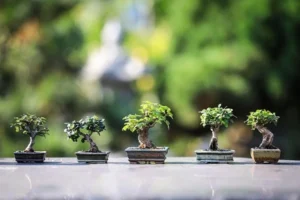Starting a small-space growing setup is exciting—but there’s one factor most people overlook: microclimates. These are tiny zones inside your room where conditions like light, heat, and humidity change more than you think.
Your room might feel the same all over. But for your plants, each shelf or corner tells a different story. Some areas are warmer, others cooler. Some dry out quickly, others stay damp.
These subtle differences create microclimate zones—and they can make or break your harvest. One side of your setup might thrive while another struggles, even with the same care.
This guide will help you notice those zones, adjust them, and use them to your advantage. You’ll learn how to turn small tweaks into a healthier, more productive harvest.
Let’s start by understanding what a microclimate really is—and why it matters so much in small rooms.
What Is a Microclimate, Really?
Let’s keep it simple. A microclimate is a small area where the climate feels different from the space around it. It’s like a tiny zone with its own rules for temperature, light, and humidity.
You’ve probably experienced this without realizing it. Maybe your balcony gets toasty in the afternoon while the rest of your apartment stays cool. Or your bathroom fogs up quickly and stays humid longer than other rooms.
Even inside one room, things can shift. The spot near your heater is warmer. The corner near the window stays chilly. That’s microclimate magic—on a small, indoor scale.
Now think about your vertical hydroponic system. It’s not just one growing space. Each shelf or level can have a slightly different environment.
The top shelf might soak up more light. The bottom tier might feel cooler and get less airflow. One side could dry out faster depending on where the air moves.
These subtle changes can have a real impact on your plants. Some might thrive, while others struggle, even when they’re just inches apart.
That’s why learning to spot and understand microclimates matters. You’re not just growing plants—you’re managing tiny environments. And when you get those right, everything grows better.
How Microclimates Happen in Small Apartments
Even in a small apartment, your environment isn’t as uniform as it seems. One corner might feel completely different from another—and your plants notice.
Let’s start with sunlight. Where it hits, how strong it is, and for how long all shape a plant’s world. A south-facing window might flood the room with light, while a north-facing one leaves things dim.
Blinds, curtains, and even nearby buildings can cast shadows or filter light. That means one shelf might get a warm glow, and another stays in the shade.
Now think about airflow. Fans, vents, or even open doors change how air moves. Stagnant air can trap moisture. Constant airflow can dry things out. It’s like a breeze in one spot and stillness in another.
Temperature also plays a big role. A radiator under a window creates a warm zone, even in winter. An AC unit on the other side of the room might keep things chilly.
Humidity is another sneaky factor. If your grow system is near the kitchen, cooking can raise the moisture in the air. A steamy bathroom or even a fish tank can tip the balance, too.
Here’s a picture: your basil on the top shelf might feel like it’s growing in the tropics. Meanwhile, the lettuce on the bottom tier thinks it’s in early spring.
These little shifts—light, heat, airflow, moisture—come together to form microclimates. And they change throughout the day.
The more you notice them, the better you can respond. Understanding these patterns is key to creating a thriving indoor garden, no matter how small your space is.
Why Microclimate Matters for Your Hydroponic Harvest
Your plants are sensitive. A little too much heat or too little light, and they start to slow down. Microclimates quietly influence how fast they grow, how well they absorb nutrients, and how resistant they are to stress or pests.
Ever had one tray thriving while another seems stuck? Same setup, same water, same nutrients—but totally different results. It’s frustrating. But often, it’s not your fault. It could just be microclimate differences at play.
In hydroponics, even more things are affected by your room’s environment. Take water temperature, for example. It’s a big deal. If your room heats up, so does your reservoir. That can throw off nutrient absorption and root health.
Different plants like different conditions, too. Spinach enjoys cooler spots. Basil? It prefers warmth and light. If you place them side by side without thinking about their preferences, one might flourish while the other struggles.
When you understand your system’s microclimates, you stop guessing. You start making small changes that lead to bigger results. Like rotating trays, adjusting lighting, or tweaking airflow.
And here’s the real payoff—better yields. Not just a few leaves here and there, but enough greens to actually enjoy every week. Small shifts in environment can mean a major boost in what you grow.
So don’t overlook the invisible stuff. The air, the light, the little changes in temperature—all of it adds up. Getting microclimates right turns your indoor garden from “just okay” to “consistently impressive.”
How to Identify Microclimate Zones in Your Growing Space
You don’t need to be a scientist to find microclimates in your apartment. Anyone can do it—with a little curiosity and a few simple tricks.
Start by trusting your senses. Walk up to your growing setup. Feel around with your hand. Some spots are warm, others feel cooler or a little dry. That’s your first clue.
Air might feel still on one side and breezy on the other. The light might seem softer on the bottom shelf. These small differences matter more than you’d think.
If you want to go a step further, try using a few beginner-friendly tools:
- Mini thermometers: Track temperature changes across different shelves.
- Humidity sensors: Spot dry vs. damp areas around your plants.
- Light meters: Check how much light each level or side is actually getting.
These tools don’t have to be expensive. Even the budget ones give you useful info.
One fun method is the “climate walk.” Slowly move your hand over, under, and around your vertical setup at different times of day. Morning, midday, evening—each tells a different story.
Keep a mini journal or log. Jot down what you feel or see: Is the top shelf warmer at noon? Does the corner near the window get dry in the afternoon?
After a week, patterns will start to show up. And once you see those patterns, you can work with them—not against them.
Noticing your microclimates is the first step to mastering them.
Beginner-Friendly Ways to Manage Microclimates
Starting with a small indoor garden can feel overwhelming, but don’t panic. Microclimates are natural, and you can easily manage them with just a few simple steps. The key is to start small, observe, and make adjustments as needed.
Here are some beginner-friendly tips to get you started:
- Rotate your plants weekly: This simple action helps balance exposure to light, warmth, and airflow. It prevents one side from getting too much or too little attention.
- Use reflective materials: Place reflective surfaces like aluminum foil or white cardboard around your setup. These materials bounce light back to your plants, helping to increase light intensity without extra equipment.
- Adjust fan placement: Airflow is crucial in preventing stagnant air. Moving your fan to different areas can help maintain consistent airflow, ensuring your plants get the oxygen they need to grow strong.
- Use humidity trays or mini humidifiers: If you notice your plants are drying out too quickly, humidity trays or small humidifiers can help add moisture to the air, especially in dry or air-conditioned rooms.
- Pair plants with similar needs: Group plants that have similar temperature, light, and humidity preferences. This helps create a more stable environment for them, making it easier to manage their growth.
The best part? You don’t need high-tech gadgets or advanced equipment to manage your microclimates. Keep it low-cost and DIY-friendly. Small adjustments can go a long way in helping your plants thrive.
By taking these steps, you can help your indoor garden stay healthy and productive—without breaking the bank. Starting small and observing your plants will make you more in tune with their needs.
The Payoff: Bigger, Healthier, Happier Plants
Tuning into your microclimate can make all the difference in your indoor garden. Small adjustments in light, temperature, and airflow lead to healthier plants that grow faster and stronger. It’s like giving your plants exactly what they need to thrive.
Even small changes in how you manage your space can lead to big wins. A slight shift in where you place your fan or moving plants to different shelves can boost growth. It might seem minor, but it all adds up.
The more you observe and adjust, the more you’ll notice positive changes. Keep experimenting with different placements and setups. Every plant is unique, and what works for one might not work for another.
So, celebrate your progress! It’s all about learning what your plants love and fine-tuning their environment. By paying attention to your microclimates, you’ll create the ideal space for bigger, healthier, and happier plants. Keep it up, and your harvests will continue to improve!
Takeaway
Don’t worry—you don’t need to be a scientist to understand microclimates. With just a little awareness, you can make a big difference in how your plants grow.
The key takeaway is simple: the “weather” inside your setup really matters. Every small change in light, temperature, and airflow adds up. It shapes how your plants thrive.
So, keep observing, experimenting, and adjusting. The more you tune into your plants’ needs, the better your results will be. Understanding microclimates isn’t just for experts—it’s something any indoor gardener can master.
By paying attention to these little details, you’ll create an environment where your plants can flourish. With patience and practice, your indoor garden will become healthier and more productive over time. Keep going—you’ve got this!




